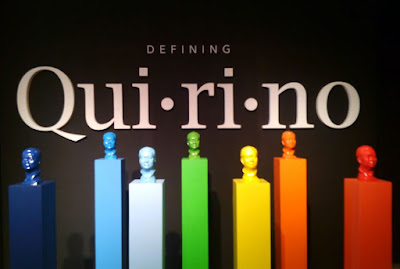*
Has it always been the plan — get married in Antarctica and shoot the wedding for Fun Taiwan?
JANET HSIEH: (George and I were) talking about the dream destination and Antarctica was it. I started inviting my friends, family, and my producer — he loves adventure and we thought, “We should film it, it’ll be fun.” Then I told George, “Hey your parents are gonna be there and my parents are gonna be there.” And he made a joke: “Why don’t we just get married,” and I was like, “That’s a good idea.”
Traveling with your partner and getting married are very intimate affairs. How does it feel to have a camera and a crew following you around every step of the way?
For me it’s quite natural because for the past ten years, working with TLC, every time I travel somewhere, I have the camera with me. Yes you’re mixing your private life with work, but I love it. When we decided to do the wedding thing, obviously I needed to talk to George, who was a little bit more reserved.
We weren’t going to have a wedding at first. But after we started filming — in Texas for ten days, then Argentina for another 10 days, and finally to Antarctica — by that time that it just became routine, so normal, to have a camera there. Plus, the advantage of having a production is that you’re focusing on planning the trip. You’re not thinking about the wedding so much. For us the idea of planning a wedding is very stressful. But planning a trip is okay! So that took off a lot of the normal wedding anxiety that you would have.
What was it like to revisit your hometown with your significant other?
That was fun. I grew up in Texas but left when I was 17. So to go back as an adult and relive all the things that we used to do — kayaking, horseback riding, eating streak — and be able to share it with George is completely different. I felt like I kind of went back to being a kid again. We were in the rodeo and I was so excited, but then George was there so sometimes it became a competition, I wanted to be the better horseback rider. Sometimes I kind of wanted to guide him, and sometimes it was just us two experiencing things for the first time together. So it was very nice, and to see George’s reaction to everything was always hilarious.
What are the major differences — maybe advantages or disadvantages — of traveling alone, with a group, and with your partner?
Travelling alone, you’ll meet so many people. Because humans are naturally social creatures, when you travel by yourself, you’re always looking to meet people. Even if it’s just one-day friends, you’ll always meet that person, and sometimes you end up traveling together for a bit of time.
When travelling with a group, obviously you have the dynamics of the group. So if it’s your friends, you really start to see things about them that you don’t normally see in day-to-day life. So that could make or break relationships. It really could. But it’s also fun. When you’re away from the stress of work and all that, a lot of times you become closer. Even if you have hard times, say, something terrible happens like bad weather and you can’t do the things you wanted to do, you’re cuddled together in one space that you end up becoming really close. That’s the advantage.
Travelling with a partner — I always say, if you really want to know your partner, travel with them. (Plan everything together) down to where you book your hotel and what kind of food you’ll eat. If you come across any problems — or just even with the shopping, how (they) interact with the shopkeepers — you’ll really see what this person is like. For me, traveling can be a deal breaker. If I don’t travel well with this person then I know I won’t have a good life with them.






